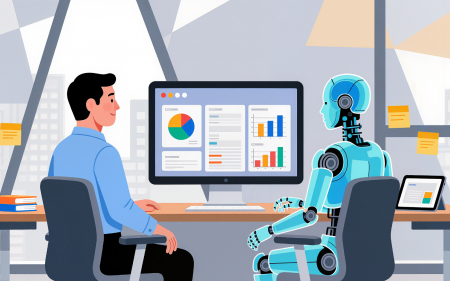Medical robots are helping doctors and other professionals save time, lower costs and shorten patient recovery times, but patients may not be ready. Our research into human perceptions of automated health care finds that people are wary of getting their health care from an automated system, but that they can adjust to the idea – especially if it saves them money.
Hospitals and medical practices are already using a fair amount of automation. For instance, in one San Francisco hospital and other places, delivery robots – about the size of a mini-fridge – zip through the hallways delivering pills, bringing lunch to patients and ferrying specimens and medical equipment to different labs. Some hospitals are set up for delivery robots to open remote-control doors and even use elevators to get around the building.
Robots can also assist with more complex tasks, like surgery. Their participation can range from simply helping stabilize a surgeon’s tools all the way to autonomously performing the entire procedure. Perhaps the most famous robotic surgery system lets a surgeon operate full-size, ergonomically friendly equipment as a remote control to direct extremely tiny instruments what to do inside a patient’s body, often through extremely small incisions.
Robots are also beginning to serve as caregivers, especially for older people. The world’s population is ageing, increasing demand for assistance with daily chores and medical tasks, as well as checking on patients’ well-being and safety. Many of those jobs are tiring, often thankless and relatively low-paying for people, but robots can help with tasks as diverse as cleaning, getting out of bed and other daily needs.
Medical service robots can even provide companionship, to reduce the isolation felt by many older people. In one study, a robotic companion was more successful than a regular plush toy at helping dementia patients communicate with their families.
How do people feel?
Robots can do a lot, but people don’t necessarily accept them in those new roles. A lot depends on how easy the robot is to interact with and the patient’s own views about new technology and the emotions they’re feeling, such as fear about an upcoming medical procedure.
A human-like robot can be more acceptable – but only if it’s not too similar to a real person, because the differences can seem creepy and unsettling. That can discourage people from trusting and interacting with the robot.
Another factor is the invasiveness of the surgery. Our research investigating patients’ willingness to undergo robotic dentistry found that the complexity of the procedure matters. Two-thirds of our respondents said they would not want a robot to handle an invasive procedure like a root canal; 32% said they would decline robotic cleaning and whitening.

However, price is a factor. When patients were told a robotic procedure would cost just half as much as one done by a person, 83% said they would accept a robotic cleaning and whitening.
Participants in the study said they were concerned that the robots might malfunction and cause them physical harm, or might even complete the wrong operation. These concerns are not unfounded: The Food and Drug Administration, which oversees health care in the U.S., is investigating reports of robotic surgery failures and malfunctions. One study found that about 3% of surgeries between 2005 and 2014 had some sort of problem; of those problems, 21% were related to various robotic failures.
There are not yet industry or professional standards for training operators of robotic surgery equipment. At the moment, many doctors get online instruction and an in-person session lasting between one day and a week. There are plenty of options for expanding training options, including using virtual reality simulations, lab training and experience in the operating room under supervision and instruction from more experienced surgeons.
Are robots in your hospital?
Humans are not obsolete yet – robots can’t yet process complex emotional and social tasks, though they can perform a variety of complex functions and even mimic some emotions. Most patients still want an actual human doctor in the room, particularly if they might be receiving negative news.
However, if you live in, or seek care in, a major city like San Francisco, Chicago or New York, you may encounter medical robots in hospitals. If you find yourself with the option of robotic surgery, there’s no need to get anxious or upset. Have an open discussion with your doctor and consider any differences in price, as robotic health care may be much cheaper. Most importantly, make sure you are receiving the highest quality health care possible and make sure you understand all the risks – robotic and otherwise.
- is a Ph.D. Candidate in Human Factors, Embry-Riddle Aeronautical University
- is Professor of Human Factors, Embry-Riddle Aeronautical University
- This article first appeared on The Conversation




